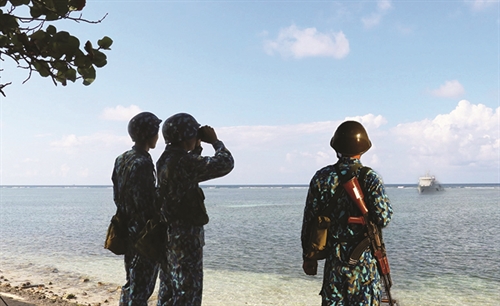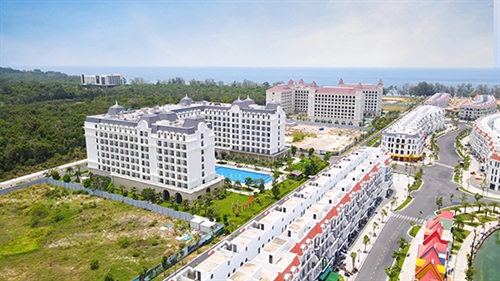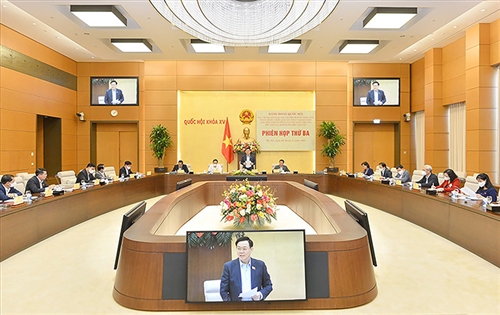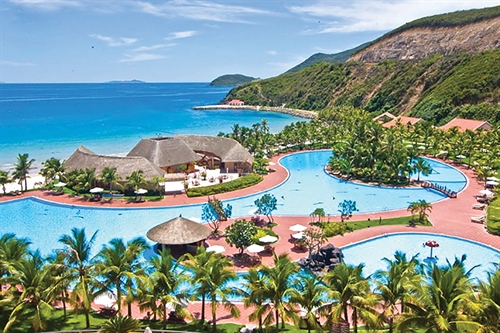On the occasion of the 40th anniversary of the adoption of the United Nations Convention on the Law of the Sea, Prof. Carl Thayer, University of New South Wales, Australia, in an interview with the Vietnam News Agency, gave some opinions about the significance of the Convention and the way forward.
Significance of the Convention
The United Nations Convention on the Law of the Sea (UNCLOS) is the product of the Third United Nations Conference on the Law of the Sea that met from 1973 to 1982. On December 10, 1982, when the UNCLOS was opened for signature, an unprecedented 119 states signed up. UNCLOS came into force in November 1994. Currently, 167 states are parties to the Convention of which 164 are UN members. In addition, 14 other UN members have signed UNCLOS but not yet ratified it.
UNCLOS provides a comprehensive legal framework for ocean governance and includes customary international law as well as new legal concepts. UNCLOS is referred to as the “Constitution for the Oceans.” It replaces a patchwork of legal claims and practices by coastal states by clearly setting out the limits on the territorial sea, contiguous zone, Exclusive Economic Zone (EEZ) and continental shelf.
UNCLOS was a compromise between coastal states and maritime powers. Many coastal states were former colonies and developing countries. All coastal states were given sovereign jurisdiction over the marine resources in waters forming their EEZs and the hydrocarbons (oil and gas), minerals and other resources on their continental shelves.
Maritime powers were accorded the right of freedom of navigation in the territorial sea and EEZ, and transit passage through straits and archipelagic sea lanes. For example, civilian and military ships were accorded the right of innocent passage through the territorial sea of coastal states. Restrictions, however, were placed on innocent passage. Passage had to be expeditious, submarines had to surface and fly their national flag, and warships had to refrain from a number of actions that might threaten a coastal state.
UNCLOS also sets out a comprehensive regime for conservation, protection and exploitation of marine resources including the rights and responsibilities of state parties to the Convention. UNCLOS also includes the duty to cooperate for protection of the marine environment, particularly in semi-enclosed seas.
UNCLOS also contains new rules for the conduct of marine scientific research that takes into account the interests of littoral states and those states that sponsor marine science research.
UNCLOS also includes the important principle that resources in the deep seabed are the “common heritage of mankind.”
UNCLOS reflects a consensus among the international community that treaties should include a binding (or compulsory) dispute settlement mechanism to make them effective. UNCLOS provides a framework for interpreting and applying the Convention to resolve disputes among its signatories.
However, UNCLOS does not address disputes among states over sovereignty or disputes over maritime delimitation. These matters are left in the hands of the states concerned.
UNCLOS was also a “package deal.” Signatories were not permitted to pick and choose which provisions they accepted and which provisions they rejected.
In sum, UNCLOS incorporated the competing interests of the vast majority of states, including landlocked states, in a comprehensive legal framework virtually dealing with all aspects of the management and governance of the seas and marine resources.
 |
| Da Nam island, a part of Truong Sa (Spratly) archipelago__Photo: Phan Sau/VNA |
UNCLOS and Vietnam
Vietnam has an extensive coastline running 3,444 km (excluding offshore features). UNCLOS provides the legal basis for Vietnam to promulgate the coordinates for its territorial sea, contiguous zone, EEZ and continental shelf and to peacefully resolve disputes with its neighbors.
In 1992, Vietnam initiated negotiations with Cambodia, Malaysia and Thailand to resolve overlapping claims to maritime zones (EEZs and continental shelves). In July 1992, Vietnam and Cambodia designated their overlapping claims in the Gulf of Thailand as historic internal waters separated by the Brevie line in 1939.
In June 1992, Vietnam and Malaysia agreed at their first round of negotiations to adopt the principle of joint development in the area where their claims overlapped. Under this agreement, their national oil companies, Vietnam Oil and Gas Corporation (PetroVietnam) and Petronas, respectively, entered into a commercial arrangement on joint exploration of hydrocarbon resources on the basis of equality in rights and obligations.
Starting in 1992, Vietnam and Thailand held nine rounds of negotiations before reaching a settlement in August 1997. This was Vietnam’s first maritime agreement based on UNCLOS. The two sides agreed to a straight-line boundary.
In 1997, Vietnam, Malaysia and Thailand agreed to adopt the principle of joint development where their claims overlapped in the Gulf of Thailand.
Vietnam and Indonesia reached agreement in 2003 on delimiting their continental shelves that entered into force in May 2007. Discussions on their overlapping EEZs are currently underway.
The way forward
There are five points worth noting.
First, UNCLOS has provided an effective mechanism for the peaceful settlement of maritime disputes among its signatories. One notable case involved the claims made by Bangladesh against India in 2009 over 25,602 square kilometers of sea. An Arbitral Tribunal ruled in July 2014 that Bangladesh was entitled to 19,467 square kilometers or 76 percent of the area in dispute. This area included 10 offshore oil blocks. As a result of this award, Bangladesh was able to establish a 200-nautical mile EEZ, extended continental shelf and gain direct access to the open sea. India accepted this award without complaint. This is a model for how UNCLOS signatories should resolve their disputes.
Second, after UNCLOS came into force, a number of littoral states adopted differing interpretations of freedom of navigation in their EEZs. Some states require prior notification for foreign vessels transiting their EEZs, while others require prior authorization. Additionally, some states have imposed restrictions on military surveys in their EEZs. Since this patchwork of requirements has been a source of tension, it should be a top priority among UNCLOS signatories to agree on uniform standards.
Third, the United States, the world’s prime maritime power, actively participated in the 3rd UN Conference on the Law of the Sea. Unfortunately, nationalists in the U.S. Senate prevented ratification due to the provisions on deep sea mining. Even when these concerns were addressed, nationalists in the Senate have prevented ratification.
Every U.S. President since Ronald Reagan (1981-89), as well as every Chief of U.S. Navy Operations since then, has declared U.S. support for customary international law and U.S. observance of UNCLOS. The United States conducts official Freedom of Navigation Operations (FONOP) to challenge excessive claims and restrictions on transit by littoral states. Because the United States has not ratified UNCLOS, it has no standing in legal proceedings. For example, a U.S. request to be an observer at the legal proceedings brought by the Philippines against China was rejected.
 |
Young soldiers on Son Ca island, Truong Sa (Spratly) archipelago__Photo: Sy Tuyen/VNA |
In sum, the failure of the United States to ratify UNCLOS and its self-assumed role as both player and referee, undermines UNCLOS and the rules-based order the United States professes to support.
Fourth, in May 2009, China officially tabled its nine dash-line map to the UN Commission on the Limits of the Continental Shelf and claimed “historic rights” to a large part of the South China Sea (known as East Sea in Vietnam). This has been the prime source of tension in the East Sea ever since.
China also rejected the authority of the Arbitral Tribunal set up under Annex VII of UNCLOS in the case brought by the Philippines. When the Tribunal rendered its Award, China repudiated it and has refused to comply. The Tribunal declared that China’s nine-dash line had no basis in international law and that China’s claim to historic rights had been superseded by UNCLOS. Nonetheless, China continues to “muddy” the legal waters by claiming sovereignty over four shas - Pratas, Macclesfield Bank, Paracels and Spratlys - even though many of the features are already occupied or claimed by littoral states. Also, international law does not sanction grouping dispersed features as a single unit and treating the enclosed sea as internal waters.
China fully participated in the 3rd UN Conference on the Law of the Sea. China lobbied strongly for the recognition of “historical rights” but was unsuccessful. Nonetheless, China signed and ratified UNCLOS. China’s actions in the East Sea from 2009 to the present have gravely undermined UNCLOS as the Constitution of the Sea because UNCLOS contains no power of enforcement or penalties for non-observance of decisions made under the binding dispute settlement mechanism.
Fifth, the current political-legal positions of China and the United States suggest that current negotiations between China and ASEAN member states for a legally binding Code of Conduct in the East Sea will not be achieved. The current Single Draft Negotiating Text repeatedly makes reference to international law including UNCLOS. These references are meaningless as long as China refuses to comply with the 2016 Award by the Arbitral Tribunal and makes claim to maritime features and zones not supported by UNCLOS.-









